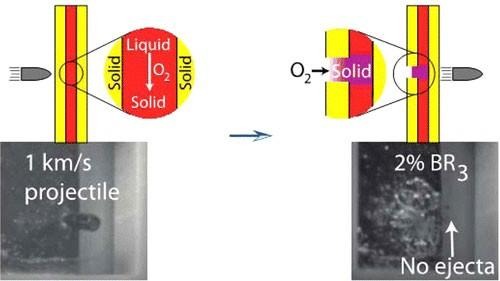NASA-Funded Research Enacts Wolverine-Style Healing
Researchers have created a material compound that, when ripped, punctured, or damaged in any way, is able to heal itself in a very short span of time. While we're not quite sure on if this technology has any applicability to human or mutant skin, like that of the Marvel Comics character Wolverine, it certainly appears to work in the field. What we're looking at here is what researchers suggest is a "terminator"-style material. We're thinking it's a bit more like our favorite quick-healing Canadian.
Either way, these researchers from University of Michigan are using funding from NASA to develop what's called oxygen-mediated polymerization induced puncture-initiated healing. It probably wont save you from being run over by a semi truck, but it might just keep adventurers safe when facing hails of bullet fire.
Wolverine has a mutant and perhaps extra-dimensional healing factor in both comic books and movies. His healing allows his body to regenerate and re-grow skin as well as organs – anything living – in a matter of minutes or (occasionally) seconds.
Of course this sort of comic book healing isn't exactly real-world science.
What today's real-world creation does is harness the power of a liquid that turns solid when introduced to oxygen. Needless to say, this combination of elements won't work in space unless one side of the puncture is oxygen-rich.
In the case of a spacecraft – or an International Space Station, for instance – this sort of solution could be life saving.

Surrounding this liquid is two solids. When a projectile – like a bullet – punctures the material, the liquid is released. When the liquid is released, it quickly (instantly might be a better word) turns to a solid.
"While other approaches for materials self-repair have utilized similar liquid-to-solid transitions, our approach permits the development of materials capable of sealing a breach within seconds, far faster than previously described methods."
You can learn more about this material in the paper "Rapid, Puncture-Initiated Healing via Oxygen-Mediated Polymerization" by authors Scott R. Zavada, Nicholas R. McHardy, Keith L. Gordon, and Timothy F. Scott. This paper is published in ACS Publications under ACS Macro Letters under code DOI: 10.1021/acsmacrolett.5b00315.
